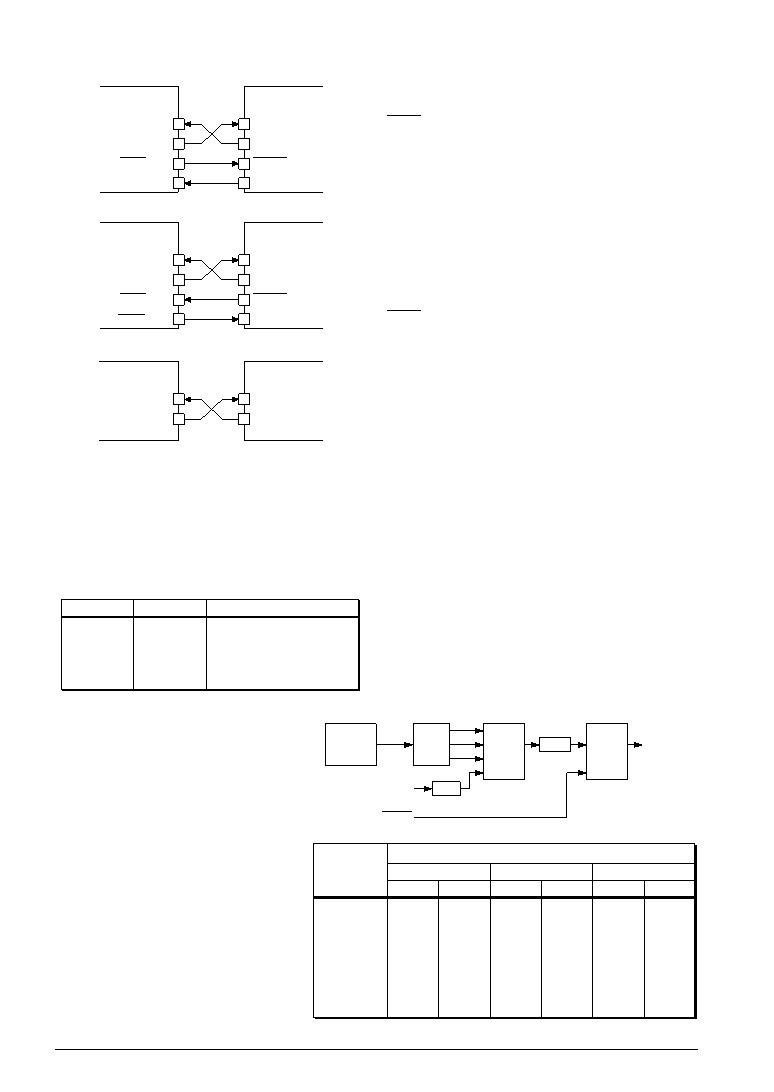- 您現(xiàn)在的位置:買賣IC網(wǎng) > PDF目錄98069 > S1C88308D0A0100 MICROCONTROLLER, UUC170 PDF資料下載
參數(shù)資料
| 型號: | S1C88308D0A0100 |
| 元件分類: | 微控制器/微處理器 |
| 英文描述: | MICROCONTROLLER, UUC170 |
| 封裝: | DIE-170 |
| 文件頁數(shù): | 331/343頁 |
| 文件大?。?/td> | 2396K |
| 代理商: | S1C88308D0A0100 |
第1頁第2頁第3頁第4頁第5頁第6頁第7頁第8頁第9頁第10頁第11頁第12頁第13頁第14頁第15頁第16頁第17頁第18頁第19頁第20頁第21頁第22頁第23頁第24頁第25頁第26頁第27頁第28頁第29頁第30頁第31頁第32頁第33頁第34頁第35頁第36頁第37頁第38頁第39頁第40頁第41頁第42頁第43頁第44頁第45頁第46頁第47頁第48頁第49頁第50頁第51頁第52頁第53頁第54頁第55頁第56頁第57頁第58頁第59頁第60頁第61頁第62頁第63頁第64頁第65頁第66頁第67頁第68頁第69頁第70頁第71頁第72頁第73頁第74頁第75頁第76頁第77頁第78頁第79頁第80頁第81頁第82頁第83頁第84頁第85頁第86頁第87頁第88頁第89頁第90頁第91頁第92頁第93頁第94頁第95頁第96頁第97頁第98頁第99頁第100頁第101頁第102頁第103頁第104頁第105頁第106頁第107頁第108頁第109頁第110頁第111頁第112頁第113頁第114頁第115頁第116頁第117頁第118頁第119頁第120頁第121頁第122頁第123頁第124頁第125頁第126頁第127頁第128頁第129頁第130頁第131頁第132頁第133頁第134頁第135頁第136頁第137頁第138頁第139頁第140頁第141頁第142頁第143頁第144頁第145頁第146頁第147頁第148頁第149頁第150頁第151頁第152頁第153頁第154頁第155頁第156頁第157頁第158頁第159頁第160頁第161頁第162頁第163頁第164頁第165頁第166頁第167頁第168頁第169頁第170頁第171頁第172頁第173頁第174頁第175頁第176頁第177頁第178頁第179頁第180頁第181頁第182頁第183頁第184頁第185頁第186頁第187頁第188頁第189頁第190頁第191頁第192頁第193頁第194頁第195頁第196頁第197頁第198頁第199頁第200頁第201頁第202頁第203頁第204頁第205頁第206頁第207頁第208頁第209頁第210頁第211頁第212頁第213頁第214頁第215頁第216頁第217頁第218頁第219頁第220頁第221頁第222頁第223頁第224頁第225頁第226頁第227頁第228頁第229頁第230頁第231頁第232頁第233頁第234頁第235頁第236頁第237頁第238頁第239頁第240頁第241頁第242頁第243頁第244頁第245頁第246頁第247頁第248頁第249頁第250頁第251頁第252頁第253頁第254頁第255頁第256頁第257頁第258頁第259頁第260頁第261頁第262頁第263頁第264頁第265頁第266頁第267頁第268頁第269頁第270頁第271頁第272頁第273頁第274頁第275頁第276頁第277頁第278頁第279頁第280頁第281頁第282頁第283頁第284頁第285頁第286頁第287頁第288頁第289頁第290頁第291頁第292頁第293頁第294頁第295頁第296頁第297頁第298頁第299頁第300頁第301頁第302頁第303頁第304頁第305頁第306頁第307頁第308頁第309頁第310頁第311頁第312頁第313頁第314頁第315頁第316頁第317頁第318頁第319頁第320頁第321頁第322頁第323頁第324頁第325頁第326頁第327頁第328頁第329頁第330頁當(dāng)前第331頁第332頁第333頁第334頁第335頁第336頁第337頁第338頁第339頁第340頁第341頁第342頁第343頁

I-76
EPSON
S1C88348/317/316/308 TECHNICAL HARDWARE
5 PERIPHERAL CIRCUITS AND THEIR OPERATION (Serial Interface)
This register setting is invalid in clock synchronous
slave mode and the external clock input from the
SCLK terminal is used.
When the "programmable timer" is selected, the
programmable timer 1 underflow signal is divided
by 1/2 and this signal used as the clock source.
With respect to the transfer rate setting, see "5.11
Programmable Timer".
At initial reset, the synchronous clock is set to
"fOSC3/16".
Whichever clock is selected, the signal is further
divided by 1/16 and then used as the synchronous
clock.
Furthermore, external clock input is used as is for
SCLK in clock synchronous slave mode.
Table 5.8.4.2 shows an examples of transfer rates and
OSC3 oscillation frequencies when the clock source
is set to programmable timer.
When the demultiplied signal of the OSC3 oscilla-
tion circuit is made the clock source, it is necessary
to turn the OSC3 oscillation ON, prior to using the
serial interface.
A time interval of several msec to several 10 msec,
from the turning ON of the OSC3 oscillation circuit
to until the oscillation stabilizes, is necessary, due to
the oscillation element that is used. Consequently,
you should allow an adequate waiting time after
turning ON of the OSC3 oscillation, before starting
transmitting/receiving of serial interface. (The
oscillation start time will vary somewhat depending
on the oscillator and on the externally attached parts.
Refer to the oscillation start time example indicated
in Chapter 7, "ELECTRICAL CHARACTERISTICS".)
At initial reset, the OSC3 oscillation circuit is set to
OFF status.
Transfer rate
(bps)
9,600
4,800
2,400
1,200
600
300
150
OSC3 oscillation frequency / Programmable timer settings
fOSC3 = 3.072 MHz
PSC1X
0 (1/1)
1 (1/4)
RLD1X
09H
13H
27H
4FH
9FH
4FH
9FH
fOSC3 = 4.608 MHz
PSC1X
0 (1/1)
1 (1/4)
RLD1X
0EH
1DH
3BH
77H
EFH
77H
EFH
fOSC3 = 4.9152 MHz
PSC1X
0 (1/1)
1 (1/4)
RLD1X
0FH
1FH
3FH
7FH
FFH
7FH
FFH
Table 5.8.4.2
OSC3 oscillation frequencies
and transfer rates
Data input
Data output
CLOCK output
READY input
SIN(P10)
SOUT(P11)
SCLK(P12)
SRDY(P13)
External
serial device
S1C883xx
Data input
Data output
CLOCK input
READY output
SIN(P10)
SOUT(P11)
SCLK(P12)
Input port(Kxx)
External
serial device
S1C883xx
(a) Clock synchronous master mode
(b) Clock synchronous slave mode
(c) Asynchronous 7-bit/8-bit mode
Fig. 5.8.3.1 Connection examples of serial interface I/O terminals
5.8.4 Clock source
There are four clock sources and selection is made
by setting the two bits of the clock source selection
register SCS0 and SCS1 as shown in table below.
Table 5.8.4.1 Clock source
Data input
Data output
SIN(P10)
SOUT(P11)
External
serial device
S1C883xx
fOSC3
1/4
1/8
1/16
Synchro-
nous clock
Programmable timer 1
underflow signal
SCLK
(Clock synchronous slave mode)
Divider
Selector
1/2
OSC3
oscillation
circuit
Fig. 5.8.4.1
Division of the synchronous clock
SCS1
1
0
SCS0
1
0
1
0
Clock source
Programmable timer
fOSC3 / 4
fOSC3 / 8
fOSC3 / 16
相關(guān)PDF資料 |
PDF描述 |
|---|---|
| S1C88308F0A0100 | MICROCONTROLLER, PQFP160 |
| S1C88348F | 8-BIT, MROM, 8.2 MHz, MICROCONTROLLER, PQFP16 |
| S1C88316D | 8-BIT, MROM, 8.2 MHz, MICROCONTROLLER, UUC172 |
| S1C88316F | 8-BIT, MROM, 8.2 MHz, MICROCONTROLLER, PQFP16 |
| S1C88409D | 8-BIT, MROM, 8.8 MHz, MICROCONTROLLER, UUC108 |
相關(guān)代理商/技術(shù)參數(shù) |
參數(shù)描述 |
|---|---|
| S1C88349 | 制造商:EPSON 制造商全稱:EPSON 功能描述:8-bit Single Chip Microcomputer |
| S1C88649 | 制造商:EPSON 制造商全稱:EPSON 功能描述:8-bit Single Chip Microcomputer |
| S1C88650 | 制造商:EPSON 制造商全稱:EPSON 功能描述:8-bit Single Chip Microcomputer |
| S1C88655 | 制造商:EPSON 制造商全稱:EPSON 功能描述:8-bit Single Chip Microcomputer |
| S1C88816 | 制造商:EPSON 制造商全稱:EPSON 功能描述:8-bit Single Chip Microcomputer |
發(fā)布緊急采購,3分鐘左右您將得到回復(fù)。